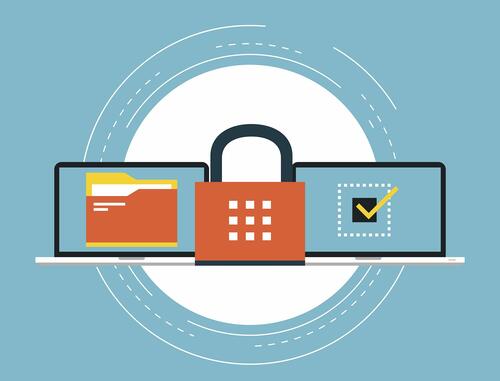If you’re looking for a secure and reliable way to send, manage, and receive files between multiple computers, then you should consider using SSH SFTP. This protocol provides a secure connection for transferring data over an unsecured network such as the internet. It encrypts all data being transferred so that it can’t be read or tampered with by anyone outside of the session.
To use SSH SFTP, the two computers involved in the file transfer must both have an SSH client installed. The client is used to establish a secure connection and authenticate the user on both systems. Once the connection is established, files can be sent and received using SFTP commands. The remote user must also provide authentication credentials such as their username and password before they are allowed access to the system.
For added security of your data during transfer, SSH SFTP supports a variety of encryption algorithms including AES-256 encryption. This ensures that all files sent over the network remain unreadable while being transferred from one computer to another. Furthermore, authentication is also enabled when using this protocol so only authorized users can access your server or files.
Another benefit of SSH SFTP is that it only requires one port to connect compared to more traditional protocols like FTP or telnet which require separate ports for each type of data transfer. This makes setting up and managing file transfers much simpler since there’s no need for multiple ports or services running at once on your server or computer system.
Overall, SSH SFTP is an excellent choice if you need to send large amounts of sensitive data over an unsecured network such as the internet. It provides a secure connection with strong encryption algorithms and authentication methods to ensure that your files remain safe during the transfer from one computer to another. With its ease of setup and use combined with its robust security features, it’s easy to see why this protocol has become so popular in recent years!

Are SSH and SFTP the Same?
No, SSH and SFTP are not the same things. SSH (Secure Shell) is a network protocol used to securely log in to a remote computer. It creates an encrypted connection between two computers and allows for the secure authentication of users.
SFTP (Secure File Transfer Protocol) is a secure way of transferring files over an SSH connection. It provides strong encryption, secure authentication, and integrity protection. SFTP also allows for file transfers to be done in an efficient manner, with features such as resumes on interrupted transfers and directory listings. As such, SFTP provides an extra level of security on top of SSH when transferring files between computers.
Can SFTP Be Accessed Through SSH?
Yes, you can SSH into SFTP. Secure File Transfer Protocol (SFTP) is a secure version of the File Transfer Protocol (FTP), which is a way to transfer files between two computers. SFTP uses Secure Shell (SSH) to encrypt the data transferred, so it is much more secure than FTP. To connect to an SFTP server, you need an SSH client such as PuTTY or a terminal program in Linux. Once connected, you can use the SFTP commands to navigate and transfer files on the remote server.
Understanding How SSH SFTP Works
Secure Shell File Transfer Protocol (SSH SFTP) is a secure file transfer protocol that uses the Secure Shell (SSH) protocol to provide secure and encrypted communication between two computers. SSH SFTP provides an encrypted connection over which files can be securely transferred between machines.
When establishing an SSH SFTP connection, both client and server must authenticate themselves to each other using an authentication method like passwords or public-key cryptography. Once authenticated, the client will create a secure channel through which files can be transferred. During the file transfer process, data is protected with encryption algorithms such as AES or Blowfish, ensuring that the files remain unreadable during the transfer. The server also verifies that only authorized users can access the files and will only accept transfers from authorized IP addresses.
Once all data has been successfully transferred, the connection is closed and all data is discarded from memory – ensuring no trace of sensitive information remains on either computer. This makes SSH SFTP one of the most secure methods of transferring files over a network.
The Use of the Same Port for SSH and SFTP
SSH and SFTP both use the same port because they are both based on the SSH protocol. SSH (Secure Shell) is a secure communication protocol that provides a secure connection between two computers over an unsecured network such as the internet. SFTP (Secure File Transfer Protocol) is an extension of the SSH protocol specifically designed for transferring files securely between computers over an unsecured network. It uses strong encryption and allows for authentication, data integrity verification, and other security features.
Because both of these protocols are based on the same SSH protocol, they both use port 22 by default to establish a secure connection. This means that when using either of these protocols, the same port can be used to make a secure connection without requiring any additional setup or configuration on either side of the connection. This makes establishing a secure session more convenient and ensures that all data transferred will be encrypted and protected from being seen or modified by anyone else other than those involved in the transfer.
Comparing SSH, SFTP, and FTP
SSH, SFTP, and FTP are all protocols used for transferring files over the internet. SSH (Secure Shell) is a secure network protocol that enables remote connections between computers. It encrypts data so that it can be transmitted securely and provides an extension to transfer files. SFTP (Secure File Transfer Protocol) is an encrypted version of FTP (File Transfer Protocol). It has a more formal structure and better compatibility than FTP, making it a much safer option for transferring sensitive information. Additionally, SFTP allows for directory listings, meaning you can browse the server’s file structure before downloading or uploading any files. In comparison to FTP, which does not provide directory listings, this makes SFTP the preferred choice in terms of security when transferring confidential data.
Setting Up SFTP Over SSH
Setting up SFTP over SSH on an Ubuntu 20.04 system is a relatively straightforward process. To begin, you will need to install SSH using the apt-get command:
sudo apt-get install OpenSSH-server
Once that is done, you will need to edit the SSHD configuration file in order to allow for SFTP access. The file you need to edit is usually located at /etc/ssh/sshd_config. You will need to add a line allowing for SFTP access like this:
Subsystem sftp internal-sftp
Match Group sftp_users
ChrootDirectory %h
AllowTCPForwarding no
X11Forwarding no
ForceCommand internal-sftp
After making these changes, save the file and restart the SSH service using the following command:
sudo service ssh restart
Next, you will need to create an SFTP users group by running this command: sudo groupadd sftp_users. This command will create an SFTP user group that can be used when creating new users.
Finally, you can create a new user and assign them to this group by running this command: sudo adduser username –ingroup sftp_users. Once the user is created, you can grant them permission to access specific directories by running this command: sudo chown -R username /path/to/directory. This will grant access only to the specified directory and its subdirectories.
Once all of these steps have been completed, your SFTP server should be up and running on your Ubuntu 20.04 system!
Understanding SFTP for Beginners
SFTP stands for Secure File Transfer Protocol, and it is a way to securely transfer files between two computers over the internet. It works by establishing an encrypted connection between the two computers so that when data is sent, it is protected and can’t be read by anyone else. To use SFTP, you need to have SSH (Secure Shell) installed on both computers.
Once you have SSH installed, you can log in to the computer which you want to send or receive data from. Then you set up the SFTP connection with a username and password. After that, you can start transferring files back and forth. When transferring a file with SFTP, the data is encrypted so that only users with the correct credentials can access it. This helps keep your data secure while it’s in transit.
In addition to security, SFTP also provides other benefits such as support for multiple platforms (Windows, Mac OS X, Linux), the ability to resume interrupted transfers, and more. It’s an efficient way to transfer files across multiple computers without having to worry about the security or reliability of the connection.
Uses of SSH
SSH is a secure, encrypted network protocol that enables two computers to communicate over an unsecured network. It is primarily used to securely access and manage remote systems, such as servers. It provides secure authentication, data encryption, and secure communication between two systems. SSH also allows users to securely transfer files between computers, execute commands on remote systems, and securely forward ports for applications like web servers. Additionally, SSH can be used in a variety of other ways such as tunneling traffic over the internet or providing access to a virtual private network (VPN). SSH can also be used to encrypt data that is sent over an insecure connection such as email or instant messaging.
Conclusion
In conclusion, SSH and SFTP are both secure protocols used for remote access to a server. SSH provides a secure connection for logging into a remote computer, while SFTP uses SSH to provide a secure way to transfer files between computers. SSH and SFTP are both encrypted protocols, meaning that files are unreadable during the transfer process. Authentication is also enabled to further prevent unauthorized file access. Additionally, only one port is needed for SFTP because it uses an SSH data stream to establish the connection, unlike FTP or telnet which require multiple ports. For these reasons, SSH and SFTP are preferred over other protocols for transferring sensitive data securely.








